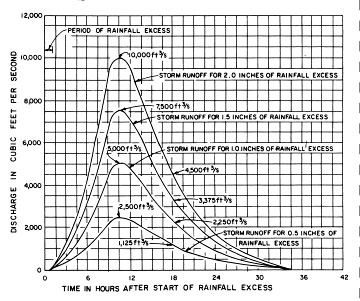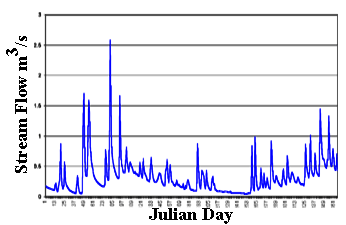
Flood Hydrology Manual,
WRTP,USGS,1989 - Dept. of Interior, pg65
 The flow of a river is quite irregular when considered over long time periods.
The flow of a river is quite irregular when considered over long time periods. There are three major steps required to forecast the hydrograph that results from a rainstorm or period of heavy snowmelt.
There are three major steps required to forecast the hydrograph that results from a rainstorm or period of heavy snowmelt.

|
A.G.Cudworth, Flood Hydrology Manual, WRTP,USGS,1989 - Dept. of Interior, pg65 |